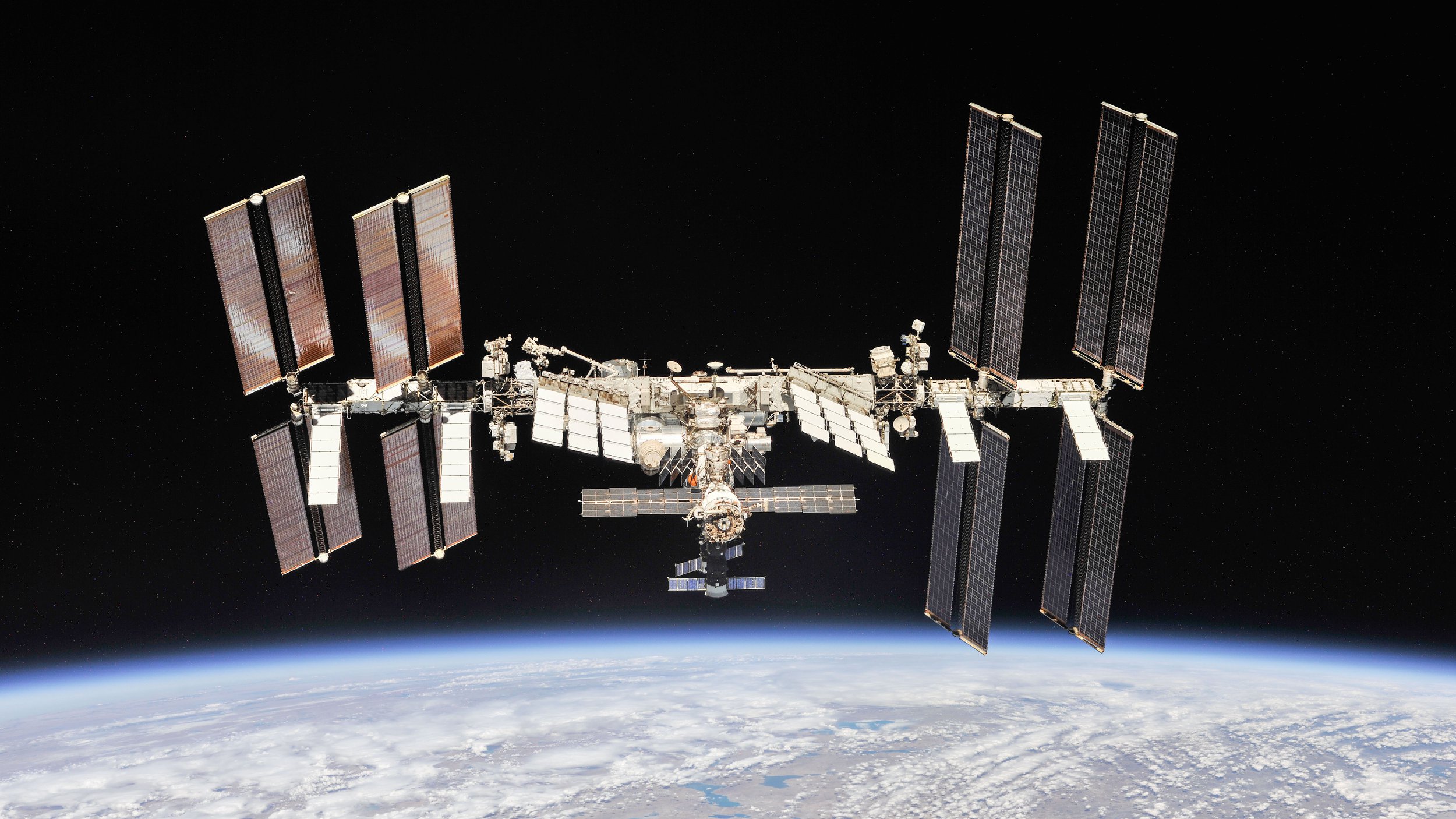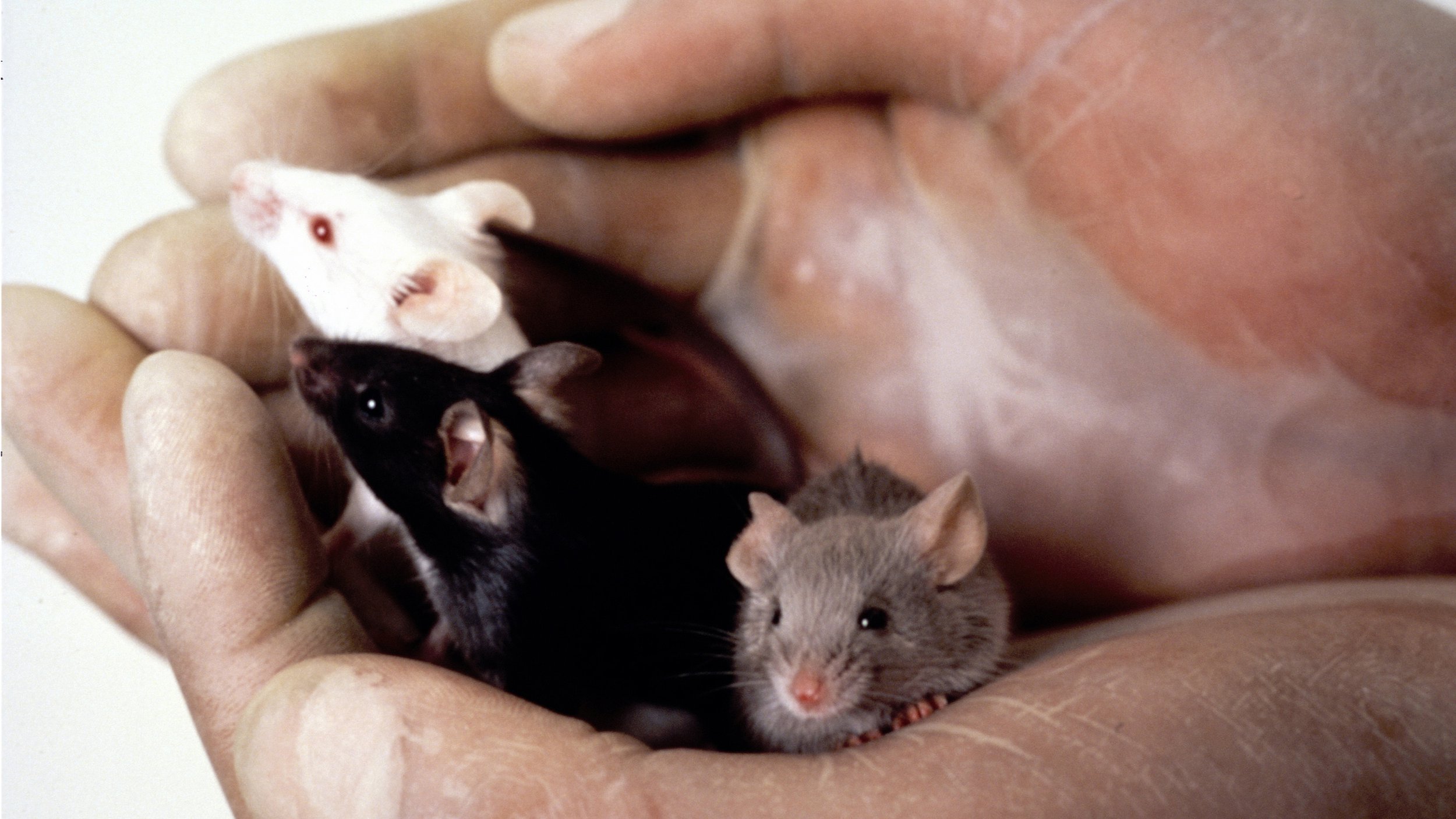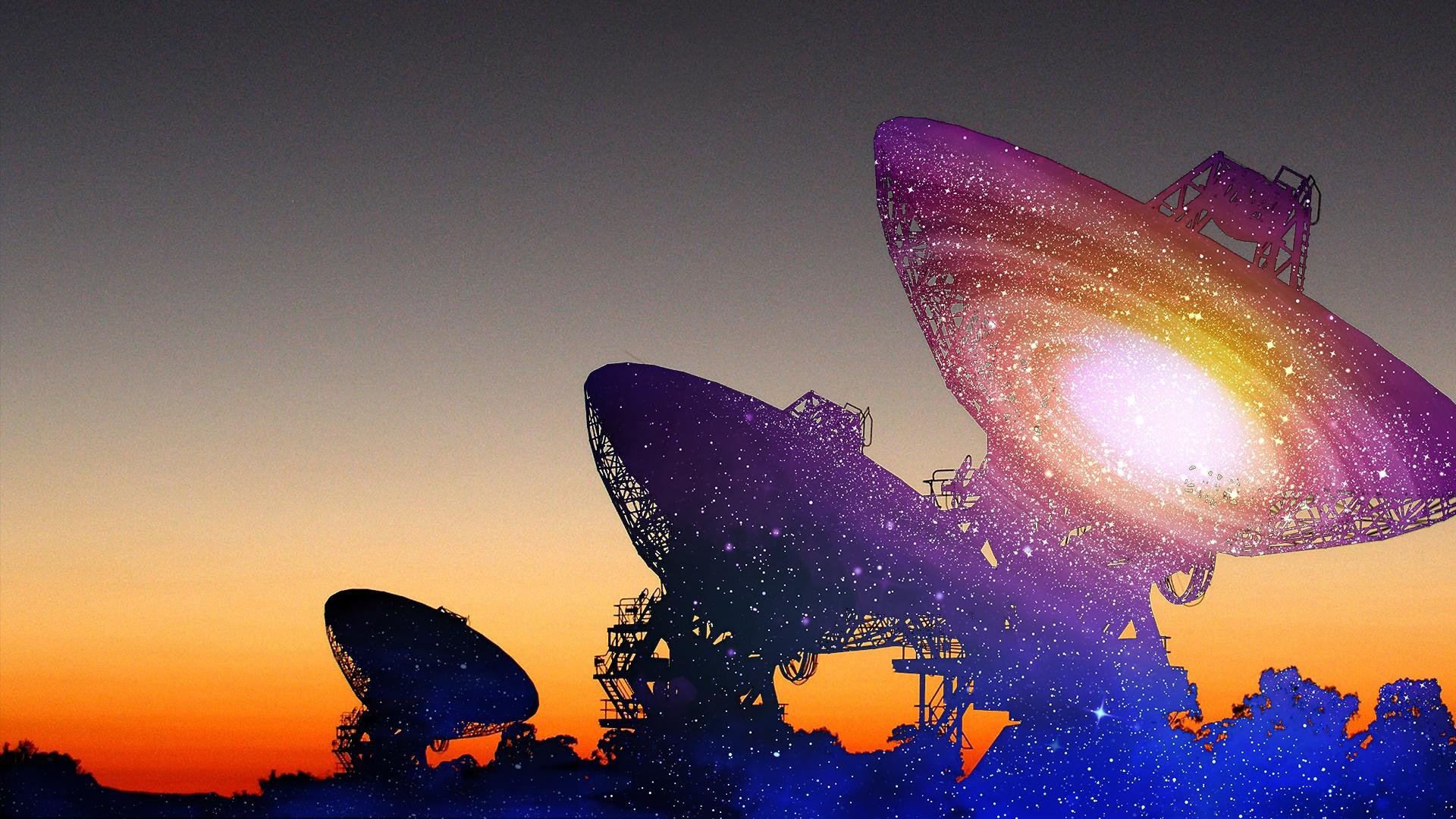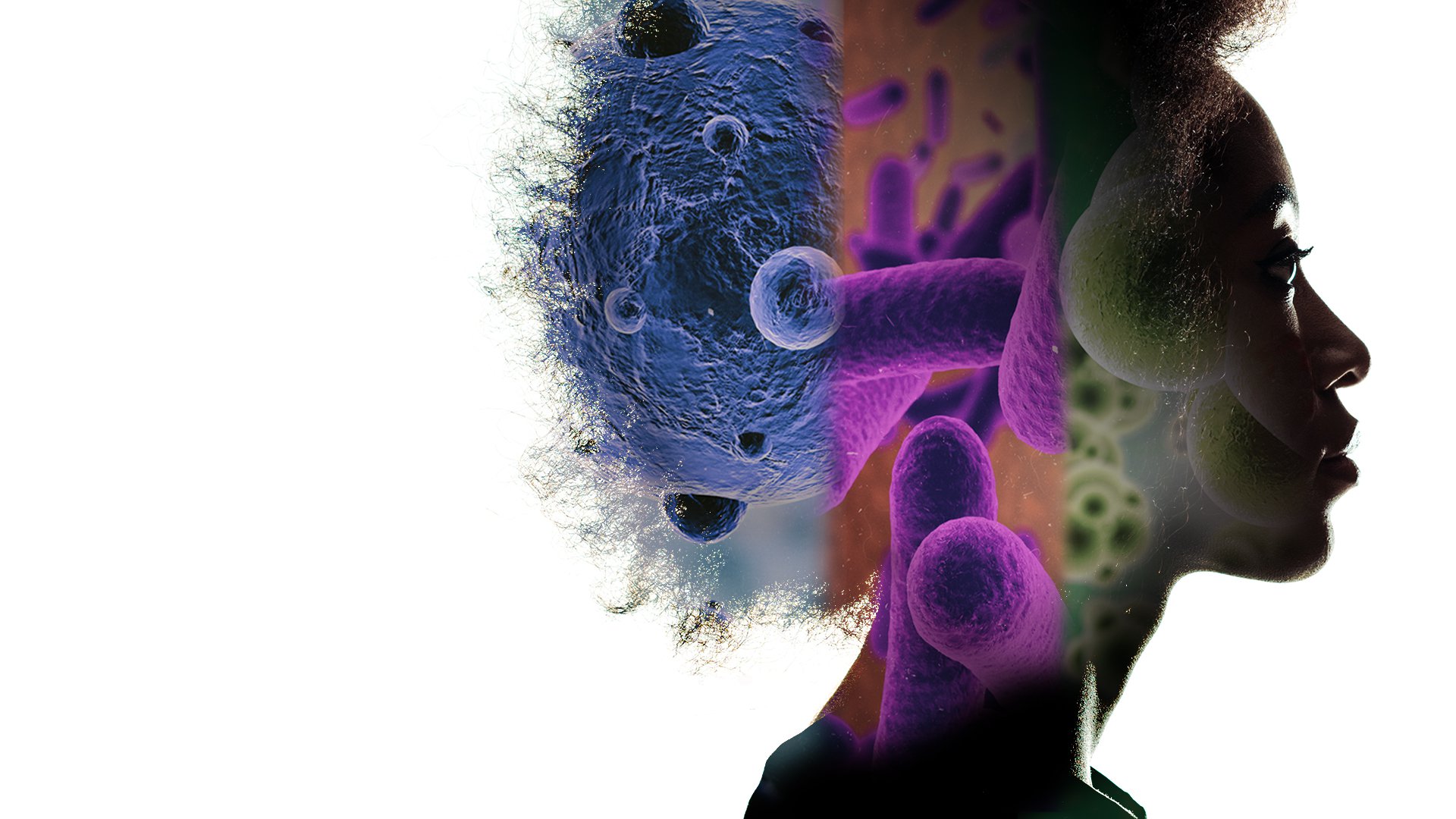Bacteria Get Funky in Space. Scientists Are Fighting With Metal.
Bacteria, both good and bad, go wherever humans do. Understanding their quirks in outer space is key to preserving astronauts’ health.

The International Space Station, which maintains a low orbit a few hundred miles above Earth's surface, is home to thousands of microbial species. Image Credit: NASA Johnson, flickr
Journeying into the vast outer reaches of space might seem an exercise in isolation. But even when pushing the boundaries of the final frontier, humans are never truly alone: Everywhere we go, a few trillion microbial hitchhikers come along.
In most cases, that’s a plus: Host-microbe partnerships are a necessary part of human existence. But occasionally, these relationships sour. And outside the constraints of Earth’s gravity, the rules of infection can shift.
“Wherever we go, bacteria come with,” says Luis Zea, a microbiologist and bioastronautics expert at the University of Colorado, Boulder. “It’s extremely important to study bacterial behavior in space, including their resistance to drugs and their ability to cause disease, to ensure long-term safe exploration of space.”
There’s now a decent body of evidence that bacteria get a little funky in outer space. Unshackled by gravity, some thrive, growing faster than normal or mounting heftier defenses against the antimicrobial effects of normally powerful drugs. Additionally, several species, including the Salmonella bacteria of food-poisoning fame, seem to develop enhanced abilities to cause disease in microgravity. Other microbes, however, do just the opposite, becoming sluggish and tame once freed of Earth’s gravitational pull.
Zea is one of several researchers investigating what factors determine the trajectory a microbe might take. One of his projects involves studying how biofilms—aggregates of bacterial cells that take on special properties, often helping them glom onto surfaces and withstand the effects of antibiotics—form and fare in the microgravity of space.
But bacterial caprice is only half of the equation. Complicating matters is the fact that microgravity seems to discombobulate the mammalian immune system, potentially making astronauts more vulnerable to pathogens lurking in their vicinity. For instance, recent research suggests immune cells that normally keep troublesome microbes in check falter during space travel, allowing dormant infections—like those caused by herpes viruses—to flare up. Disease is no picnic in any context, but the stakes are far higher in space: Medical assistance is hard to come by hundreds of miles above Earth’s surface.
This ups the ante on keeping potentially harmful pathogens out of spacecraft environments, where several strains of multidrug-resistant bacteria have already been isolated. But aboard the International Space Station (ISS), “there is only a stringent list of disinfectants we can use,” says NASA microbiologist Sarah Wallace. Many of the chemicals we use to scrub down kitchens and bathrooms on our home planet are too noxious for this habitable satellite, first launched into low Earth orbit in 1998. After all, when fumes build up on the ISS, “you can’t just roll down the window,” Wallace says.
To circumvent this, researchers like Elisabeth Grohmann, a microbiologist at the Beuth University of Applied Sciences in Germany, are developing a new set of metal-based materials to combat the spread of disease. Their work shows that treating surfaces near high-traffic areas, like the doors of ISS bathrooms, with a metal-based antimicrobial coating effectively kills off a panoply of pathogens, including bacteria, fungi, and viruses. The team’s compound, called AGXX, contains silver and ruthenium, which engage each other in a chemical cycle, yielding a self-regenerating, multi-purpose veneer with a long lifespan.
“This coating can be used on any kind of material—there’s not really a limitation on where it can go,” Grohmann says. But, she adds, that doesn’t mean there will be any kind of push to coat the entire ISS with AGXX. Not only would that be expensive and logistically impractical, but it could also do more harm than good. Our bodies, which house just as many bacterial cells as human cells, aren’t meant to live in sterile spaces. And just as they do on Earth, many of the benign and beneficial microbes that have colonized the ISS might play important roles in keeping more infectious strains at bay.

NASA microbiologists Sarah Wallace (left) and Sarah Stahl (right) in their Johnson Space Center lab, where they are working to streamline microbial identification techniques for use aboard the International Space Station. Image Credit: Rachel Barry
As it stands (or orbits), the ISS is by no means a virulent cesspool of disease. Though human pathogens have been isolated on the satellite, most of them are the same regulars that frequent our homes and workplaces here on Earth, and only cause problems if they happen to find their way into inappropriate places, like the inside of an open wound.
“The ISS is probably as clean as your home, and cleaner than a college dorm room,” Wallace says (though the latter might not set a particularly high bar). “Our astronauts aren’t being exposed to really awful things all the time—it’s almost the opposite.”
Still, when it comes to the spacebound bacteria that can cause us issues, understanding their quirks remains an important pursuit. By figuring out how these hardy little cells adapt to extreme conditions, researchers might learn important lessons about how to stop them in their tracks—which could inform efforts here on Earth, where the threat of antibiotic resistance grows with each passing year. “The ISS is almost a simple, model system, where you can control and observe colonization of surfaces without too many other factors,” says Laura Leff, a bacterial ecologist at Kent State University. “If we can’t control it there, we can’t control it elsewhere. So the applicability could be really broad.”
With ideas like these in mind, Wallace and her colleagues at NASA are developing new techniques to identify and study microbes and their adaptations on the ISS without having to ship samples to laboratories on Earth. The hope is that these tools and others might lead to enhanced diagnostics, and a clearer understanding of how different bacterial strains could be impairing—or bolstering—the health of the humans they encounter.
Whether friend or foe, when it comes to microbes, the only constant is the tenacity of the bacteria themselves, Leff says. “They’ll find a way to succeed, regardless of environmental conditions.”



